Introduction
Following the introduction of the Dehavilland Mosquito into the RAF, it was apparent that this type of aircraft was much needed and as such was vital to the war effort. Rather than produce a multitude of different aircraft / variants to fullfil a number of roles the RAF issued a specification for an aircraft with improved characteristics building on the DH Mosquitos fundamental attributes. The aircraft should be able to be used as; a heavy fighter, a fighter bomber, a light bomber / paveway aircraft and a photo-recce aircraft.
RJ took it upon themselves to create just such an aircraft, inspiration could be said to come from other similar aircraft designs of the era such as the Boulton Paul P.100 or the Henschel Hs P87. Designed in 1943 and test flown in the same year, the RJ Cranefly (the bug of the same name is nicknamed the Mosquito eater) entered mass production and reached front line squadrons in early 1944.
The aircraft depicted in this model was principly used in the photo recon role (hence the blue underside) but was then transferred to be used in the interdiction roles during D-Day on the 6th June 1944 (hence the D-Day stripes). Powered by 2no. Napier Sabre engines with superchargers taken from P38 lighting aircraft the Cranefly was able to better the Mosquitos top speed.
The model includes a small bomb-bay in a similar manner / size as the DH Mosquito, numerous different loadouts could be carried in this bay, in this example a recon fuel tank has been included but space is still availiable for a bomb load if required. Armed also with 6no. 20mm Hispano cannon, this could be amplified with underslung cannon, rockets or other ancillary loads such as drop tanks etc.
Model includes - sequenced undercarriage, tapered wings, landing gear lights (linked to LG sequence), realistic flight controls, exhaust lights,
Controls
AG1-2 = start / stop engines - funkytree command has engines running at 2% power on start
AG3 = open / close bomb bay
VTOL dn = flap position for canard control surfaces
LG = landing gear retract - funkytree commands used for sequencing of gear doors
Flight instructions
Takeoff - AG1-2 activate, VTOL dn 50% selected then throttle up and pitch back around 100mph
Flight - gently reduce VTOL dn as speed increases, Trim can be used if speed increases past around 400mm and the nose starts to climb gently
Landing - slow down to around 250mph, 100% flap selected, reduce throttle further, landing is around 150mph (or slower if you can keep the nose up)
Landing taxy - gently apply the brakes (cntrl) releasing as necessary to avoid any jacknifing etc.
Pictures
Bomb bay open

At rest ready for startup

Takeoff and wheels retracting

On climb out

Silliness
Well during development sometimes its good to have fun with your build, how low can you go?

High contrast building scheme for the camo...

Specifications
Spotlights
- WinsWings 1.8 years ago
General Characteristics
- Predecessor WWII Challenge (Closed)
- Created On Windows
- Wingspan 38.2ft (11.7m)
- Length 40.8ft (12.4m)
- Height 14.0ft (4.3m)
- Empty Weight 11,543lbs (5,235kg)
- Loaded Weight 17,774lbs (8,062kg)
Performance
- Horse Power/Weight Ratio 0.112
- Wing Loading 22.8lbs/ft2 (111.2kg/m2)
- Wing Area 780.3ft2 (72.5m2)
- Drag Points 1675
Parts
- Number of Parts 1035
- Control Surfaces 2
- Performance Cost 3,351

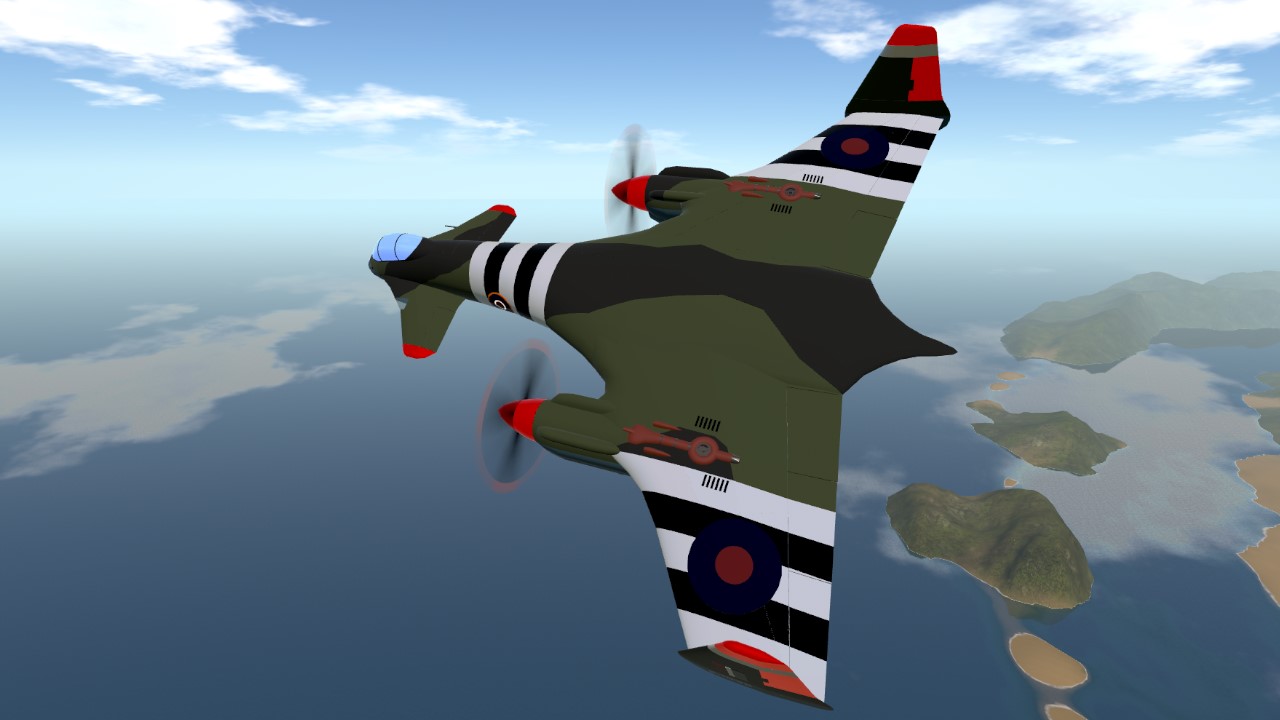
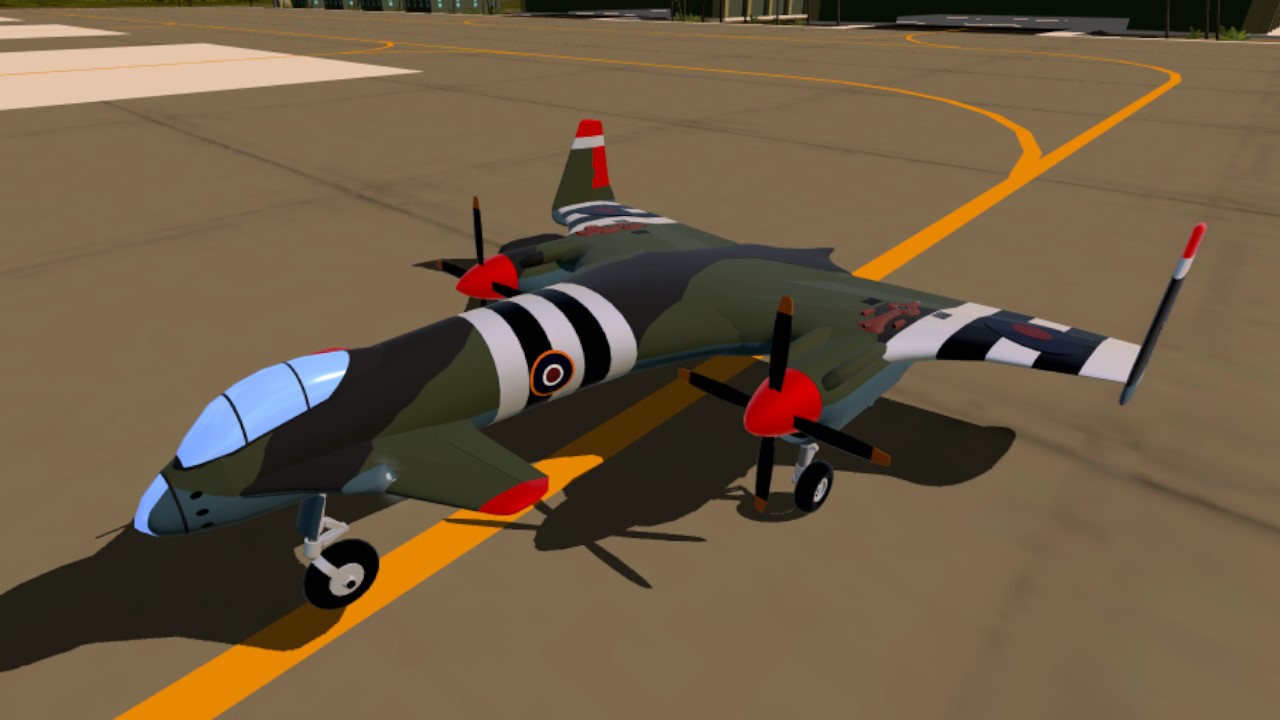
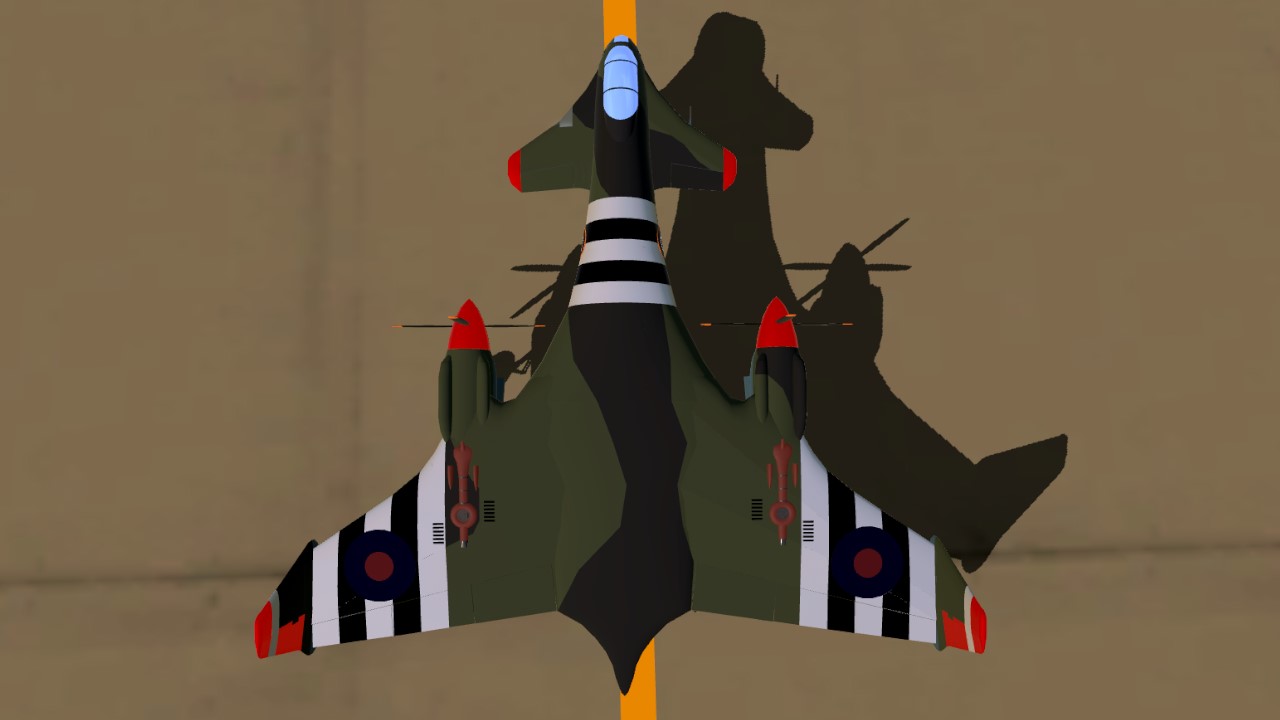
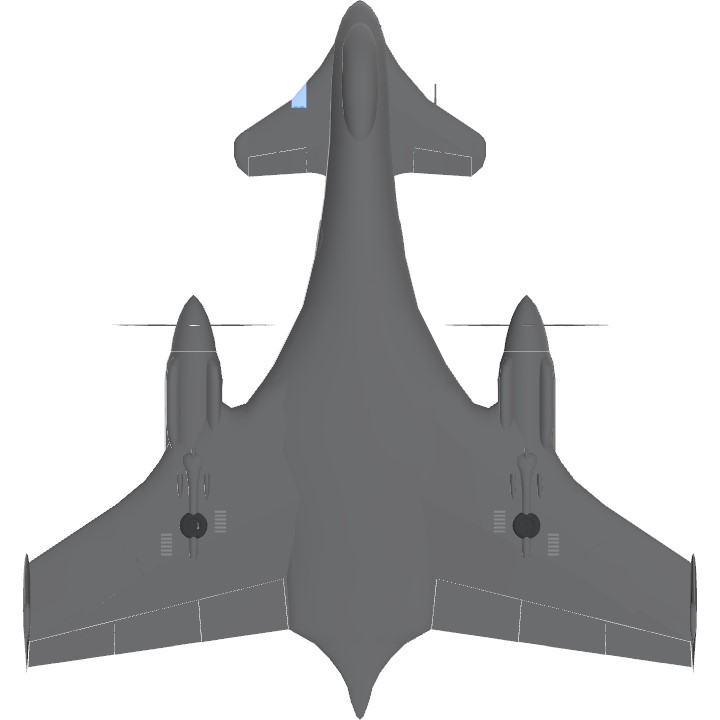
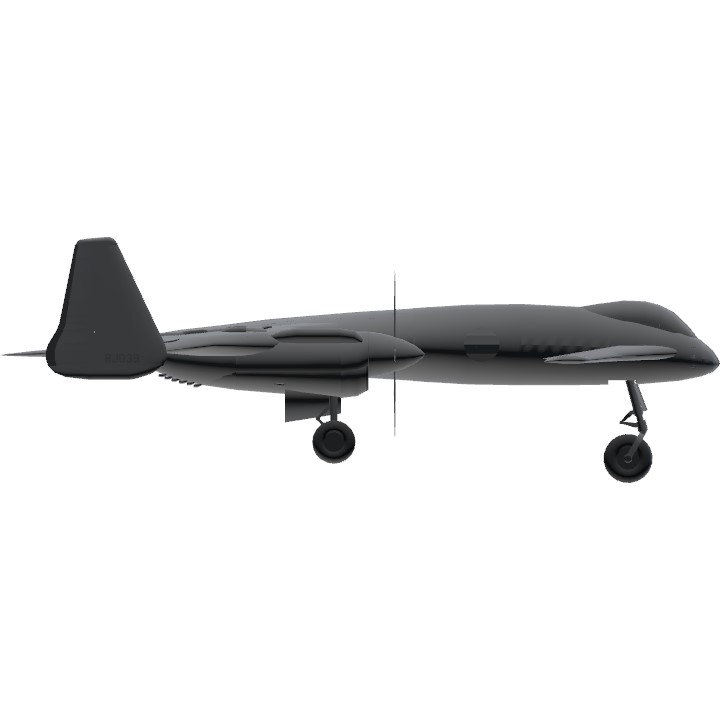

@RamboJutter alright, scores updated
@MAHADI Thanks. It is armed though, it has 6no cannon in the nose? I didnt put anything in the weapons bay as per real life aircraft the load out is mission dependent and i was using this as a fighter primarily (but like the mosquito it has a weapons bay if required).
i am impressed at how you made the LG mechanism so cool
but why no weapons? you tagged it as multirole yet even the bomb bay is empty?
RATING
Looks : 9/10 pts.
Details : 9/10 pts.
Performance : 8.75/10 pts.
Weaponry : 9/10 pts.
Functionality : 9.25/10 pts.
Bonus : 9.5/10 pts. (LG mechanism)
OVERALL RATING : 9.08/10
highly unusual design, looks interesting!
I feel like this should have the Dieselpunk tag, idk just a thought
This is very good
this is so cool.. I love it